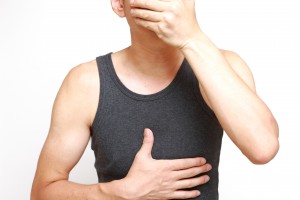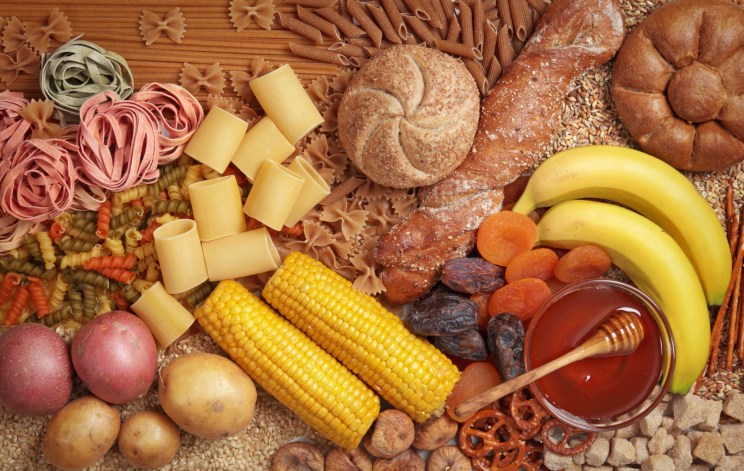How long does food poisoning last?
 If you’ve ever wondered – how long does food poisoning last? – well, we are here to answer that burning question and provide you with other facts regarding food poisoning. The simple and direct answer to the question how long food poisoning lasts is between one to two days, typically. Symptoms will subside on their own – we will get into symptoms in more detail later – and you will slowly begin to feel like yourself again. Generally, if you are still experiencing food poisoning symptoms longer than two days, you should go see your doctor.
If you’ve ever wondered – how long does food poisoning last? – well, we are here to answer that burning question and provide you with other facts regarding food poisoning. The simple and direct answer to the question how long food poisoning lasts is between one to two days, typically. Symptoms will subside on their own – we will get into symptoms in more detail later – and you will slowly begin to feel like yourself again. Generally, if you are still experiencing food poisoning symptoms longer than two days, you should go see your doctor.
Food poisoning is a result of eating contaminated food, and almost immediately you will begin to feel its effects. Food poisoning can come on sudden, and symptoms can be quite taxing on the body. To avoid complications, rest and stay hydrated as much as possible.
How long do food poisoning symptoms last?
How long food poisoning will last and when symptoms will begin to show depends on what bacteria you ingested. If food poisoning is a result of staph bacteria, symptoms can appear within one or two hours. If your food poisoning is from campylobacter, it can take up to 10 days for symptoms to show, which also is enough time for you to forget that it could be a result of tainted food so you may believe you have the stomach flu instead.
Depending on the infection, symptoms may last for days or even months – in that case, you should see your doctor about more aggressive treatment methods.
Here is a chart created by the Mayo Clinic to help you easily see how long it takes for symptoms to emerge in food poisoning based on the bacteria that caused it.
What are the symptoms of food poisoning?
 Symptoms of food poisoning can vary from person to person and even vary based on the cause of the food poisoning, but common symptoms of food poisoning include abdominal cramps, diarrhea, vomiting, sweating, dizziness, tearing in the eyes, excessive salivation, mental confusion, and stomach pains.
Symptoms of food poisoning can vary from person to person and even vary based on the cause of the food poisoning, but common symptoms of food poisoning include abdominal cramps, diarrhea, vomiting, sweating, dizziness, tearing in the eyes, excessive salivation, mental confusion, and stomach pains.
More severe and rare symptoms of food poisoning include partial loss of speech, blurred vision, muscle weakness, difficulty swallowing, dry mouth, and muscle paralysis.
When to see a doctor for food poisoning?
You should see a doctor to confirm diagnosis of food poisoning as it also appears as other conditions, so it’s safer to rule it out. You should be aware of symptoms related to dehydration and fever, as those are quite serious and require medical attention.
See your doctor immediately if you begin to notice the following:
- Dehydration signs, such as sunken eyes, dry mouth, or decreased urination
- Diarrhea that lasts longer than two days and is very severe
- Severe abdominal pain
- Significant vomiting or nausea
- Black, tarry, or bloody stools
- A fever greater than 102 °F
- Signs of chemical or toxin poisoning, including tearing of the eyes, salivation, confusion, stomach pain or dizziness, usually occurring within 30 minutes of a meal
Also see your doctor if you experience the more severe, rare symptoms listed above.
Food poisoning prevention and home remedies
 If you want to continue enjoying food without ending up in the hospital, follow these tips to prevent food poisoning from occurring:
If you want to continue enjoying food without ending up in the hospital, follow these tips to prevent food poisoning from occurring:
- Always wash your hands before handling food and in-between handling different food items.
- Always wash cutting boards and surfaces that food has been placed on.
- Use different cutting boards for different food items.
- Separate meat from other ingredients.
- Cook food thoroughly.
- Keep your fridge below 41 degrees Fahrenheit.
- Cool leftovers quickly – within 90 minutes – and store it in the fridge.
- Always follow “best before” dates, especially with dairy products.
Basic treatment of food poisoning is replenishing lost fluids and taking antibiotics. Drinking water may not be enough to fully restore the body with lost nutrients, such as potassium and sodium, so drinking an enriched sports beverage may be more helpful. Antibiotics, on the other hand, are usually prescribed when symptoms are serious and a doctor can determine the exact strain of bacteria. If symptoms of food poisoning are not severe, over-the-counter medicines to ease diarrhea and stomach cramping may be useful.
Natural remedies for food poisoning involve avoiding eating larger, heavy meals – you may want to stay clear of steak and potatoes for a while. Sticking to items like banana and toast will be easier on your stomach. Avoid smoking, alcohol, caffeine, dairy products, and heavily seasoned foods – the blander the food item, the better. Rest as much as possible. Without eating like you normally do, you’ll be weaker, so it’s best not to strain yourself even more. The color, shape and smell of your poop shout out the current status of your health, and therefore, the subject of stool certainly needs more attention. Appalling, but true!
These tips can help ensure you get the most out of your food safely. Food should provide us with nutrients and energy, not a trip to the hospital. By being aware of how we are handling and preparing our food, we can prevent food poisoning and continue to enjoy those tasty, healthy meals. And in the case you do develop food poisoning, allowing it to pass and not putting added stress on yourself will have you back on your feet in no time.
Listeria outbreak 2016: listeria outbreak, listeriosis, food poisoning, and foodborne diseases
Listeria is a bacterium that can thrive in both anaerobic (without oxygen) and aerobic (with oxygen) conditions, and is widely known for causing an infection in humans called listeriosis, a foodborne disease similar to food poisoning. There are six different species of listeria, and the one causing the disease is L. monocytogenes. Main listeriosis symptoms are typical for common foodborne diseases and include fever, muscle aches, and nausea or diarrhea. Continue reading…
-
Top Ways To Get Started On Coking Healthy Recipes 05
So you had Mexican, Continental, Chinese and Indian recipes. And if so
-
Lose Weight Fast And Still Enjoy Your Meals
Our ancestors knew what they were doing
-
The Vilification Of Climate Change Sceptics
An article in the Washington Times recently discussed how skeptics of
-
Crucial Facts Regarding Weight Reduction Pills
People are always looking for easy ways
-
Major Reasons For Pursuing Weight Loss Programs
Dieting represents one of the most difficult tasks an individual woul
-
The Benefits Of Bariatric Lap-Band Surgery
Bariatric Lap-Band surgery is one of the safest bariatric surgeries av
- DON'T MISS
- How To Lose Weight Without Really Trying
- I Think I Have An Eating Disorder And Want To Stop
- The Real Mayo Clinic Diet
- 5 Things Ive Learned By Stopping The Diet
- Don’t Get Caught Up In Fad Diets
- Getting The Right Approach To Loosing Your Weight
- Find Out If Diet Pills Work
- Are You Curious About the Way Proper Diet Enhances Weight Loss?
- Fad Diet Junkie
- Weight Loss Supplements – Why Not to Mix with Diets




